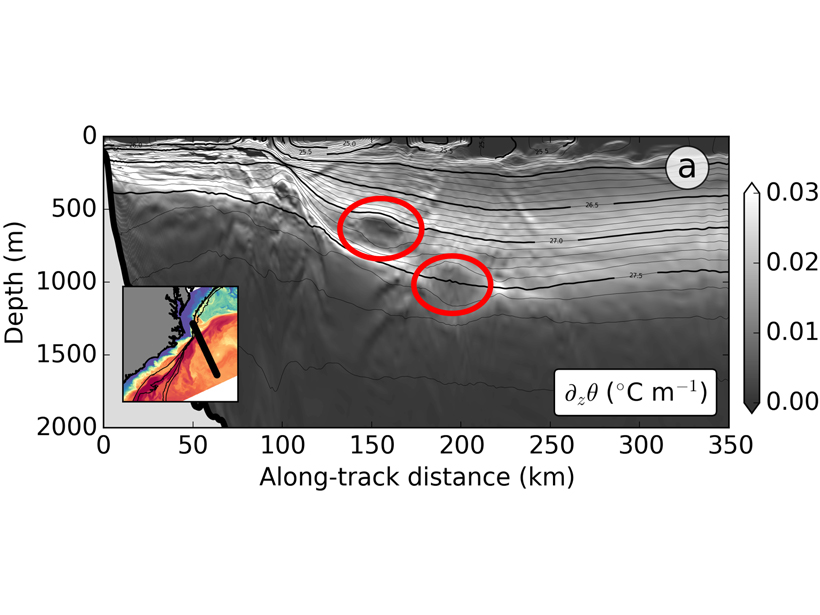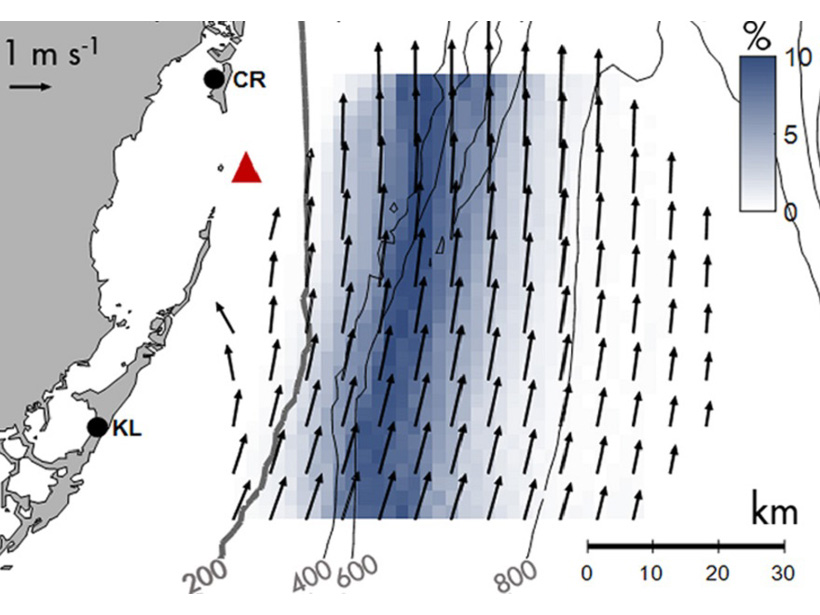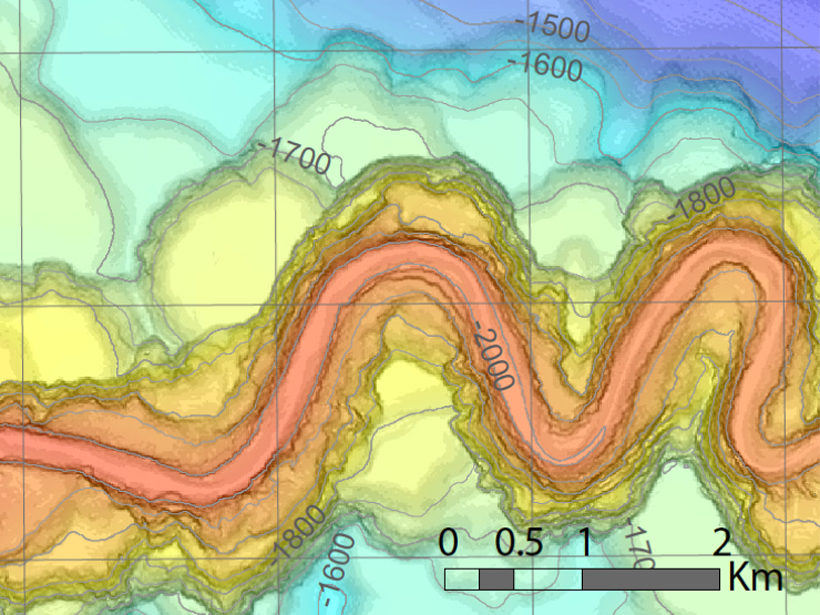Roughly 25 meteotsunamis strike coastlines between Maine and Puerto Rico each year, tide gauge data reveal.
Atlantic Ocean
North Atlantic Circulation Patterns Reveal Seas of Change
New evidence suggests the eastern Atlantic may be the site of major overturning.
Wrinkles and Bumps in the Gulf Stream
Observations of tiny vortices in the ocean interior provide hints of a dynamic richness of the deep ocean that we are yet to fully appreciate.
Project VoiLA: Volatile Recycling in the Lesser Antilles
Deep water cycle studies have largely focused on subduction of lithosphere formed at fast spreading ridges. However, oceanic plates are more likely to become hydrated as spreading rate decreases.
Atlantic Overturning Circulation Questions Abound
International AMOC Science Meeting; Miami, Florida, 24–27 July 2018
Radionuclide Data from GEOTRACES Improve Particle Flux Estimates
New measurements of multiple radionuclides in the Atlantic Ocean offer a robust constraint on the sinking flux of particles and associated vertical fluxes of biogeochemically important elements.
Why Is the Gulf of Maine Warming Faster Than 99% of the Ocean?
The Gulf of Maine’s location at the meeting point of two major currents, as well as its shallow depth and shape, makes it especially susceptible to warming.
Scraping Bottom: Iceberg Scours Reveal North Atlantic Currents
A 3-D seismic analysis of Pleistocene iceberg gouges indicates that surface currents in the Norwegian Sea flowed northward and remained consistent during numerous glacial cycles.
Energetics of Western Boundary Current Surface Flows Are Similar
Despite different wind forcing and air-sea heating conditions, the surface layer energetics of two Western Boundary Current systems in different ocean basins are surprisingly similar.
How Do Deep-Sea Gravity Currents Transport Sediment So Far?
The first field measurements of turbidity currents flowing around submarine channel bends indicate spiral flow plays a key role in keeping sediment suspended for hundreds of kilometers.










